PBS NewsHour Has A New Science Video Series called ScienceScope - And Their First Episode Is All About





PBS NewsHour has a new science video series called ScienceScope - and their first episode is all about smells!
Scientists, sponsored by the National Science Foundation and the White House Brain Initiative, are trying to understand how smells travel, and how we detect them. They simulate the turbulent wafting of an order with dye in water. The hope is that this research will lead to smell-detecting robots that could replace search dogs.
Images courtesy of PBS NewsHour/Brian Gill/Nsikan Akpan
More Posts from Er-zico and Others





This is what a real, qualified OBGYN will tell you about what women feel when they get an abortion
Dr. Willie Parker, who is trained as a gynecologist and OBGYN, is a hero for the pro-choice movement because he’s honest about the undiscussed aspects of getting (or not getting) an abortion. Watch how he gives a consultation.

















Striking photos show the Netherlands prison which has become a shelter for refugees and migrants

Brexit makes a trip to the UK a great travel deal
The collapsing value of the pound in the wake of Britain’s vote to leave the European Union is frightening news for the country’s economy — but great news for Americans itching to plan a last minute summer vacation.










Read the full story here.
What is it Like to Visit Jupiter?
Jupiter is the largest planet in our solar system. For some perspective, if it were hollow, more than 1,300 Earths could fit inside of it! The giant planet contains two-thirds of all the planetary mass in the solar system and holds more than dozens of moons in its gravitational grip. But what about a visit to this giant planet?

Let’s be honest…Jupiter is not a nice place to visit. It’s a giant ball of gas and there’s nowhere to land. Any spacecraft – or person – passing through the colorful clouds gets crushed and melted. On Jupiter, the pressure is so strong it squishes gas into liquid. Its atmosphere can crush a metal spaceship like a paper cup.

Jupiter’s stripes and swirls are cold, windy clouds of ammonia and water. Jupiter’s Great Red Spot is a giant storm BIGGER THAN EARTH! This storm has lasted hundreds of years.

Since Jupiter’s atmosphere is made up of mostly hydrogen and helium, it’s poisonous. There’s also dangerous radiation, more than 1,000 times the lethal level for a human.
Scientists think that Jupiter’s core may be a thick, super hot soup…up to 50,000 degrees! Woah!
The Moons

Did you know that Jupiter has its own “mini solar system” of 50 moons? Scientists are most interested in the Galilean satellites – which are the four largest moons discovered by Galileo Galilei in 1610.
Today, Galileo would be astounded to know some of the facts about these moons. The moon Io has active volcanos. Ganymede has its own magnetic field while Europa has a frozen crust with liquid-water underneath making it a tempting place to explore for future missions.

When Juno arrives to Jupiter on July 4, it will bring with it a slew of instruments such as infrared imager/spectrometer and vector magnetometer among the half a dozen other scientific tools in its payload.
Juno will avoid Jupiter’s highest radiation regions by approaching over the north, dropping to an altitude below the planet’s radiation belts – which are analogous to Earth’s Van Allen belts, but far more deadly – and then exiting over the south. To protect sensitive spacecraft electronics, Juno will carry the first radiation shielded electronics vault, a critical feature for enabling sustained exploration in such a heavy radiation environment.
Follow our Juno mission on the web, Facebook, Twitter, YouTube and Tumblr.
Make sure to follow us on Tumblr for your regular dose of space: http://nasa.tumblr.com


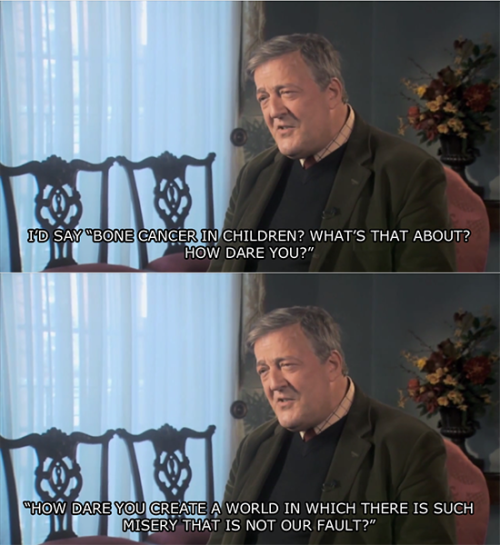


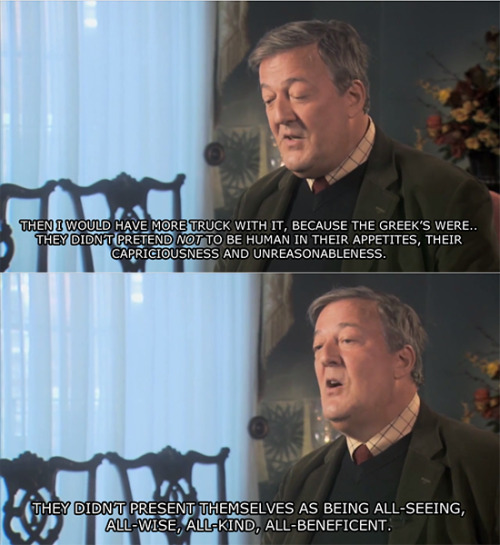
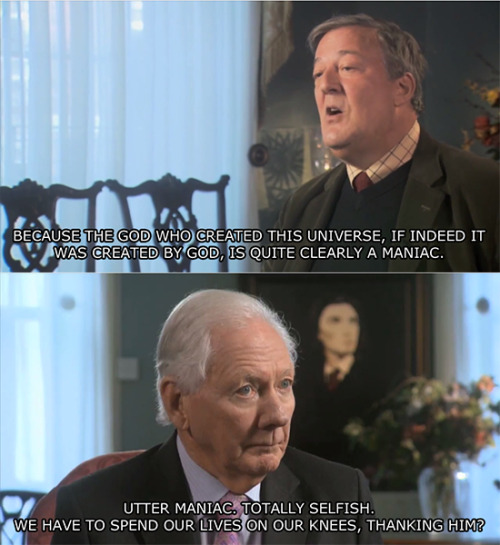
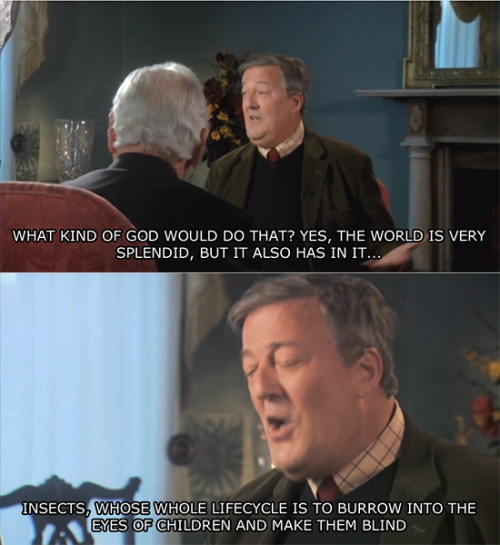

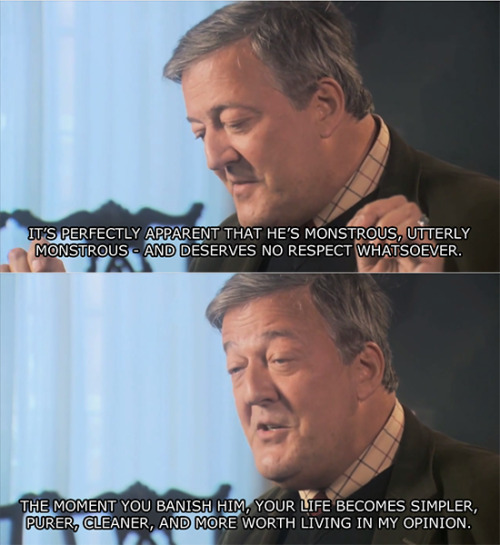
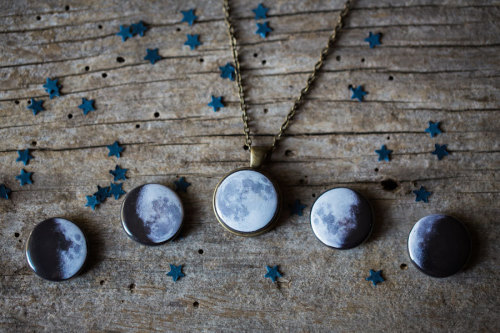

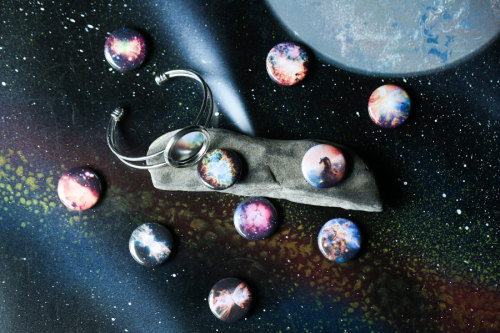
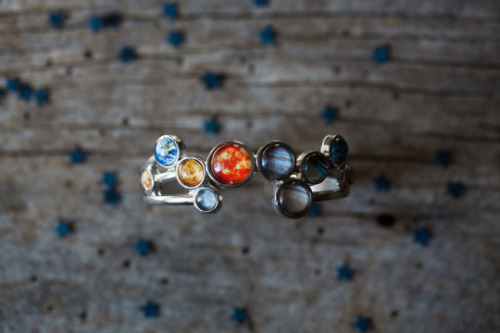
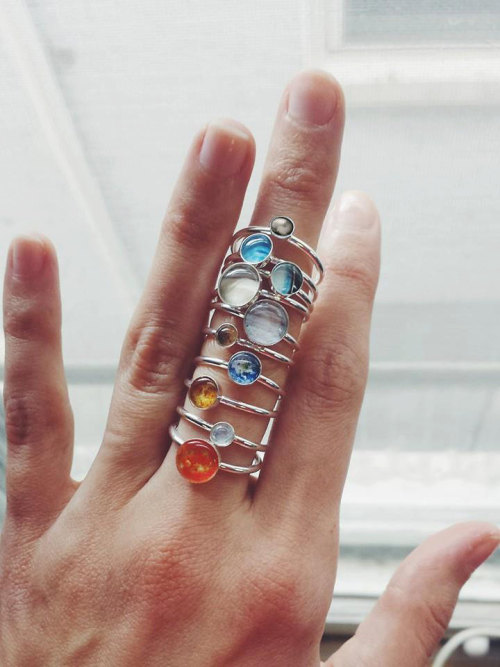
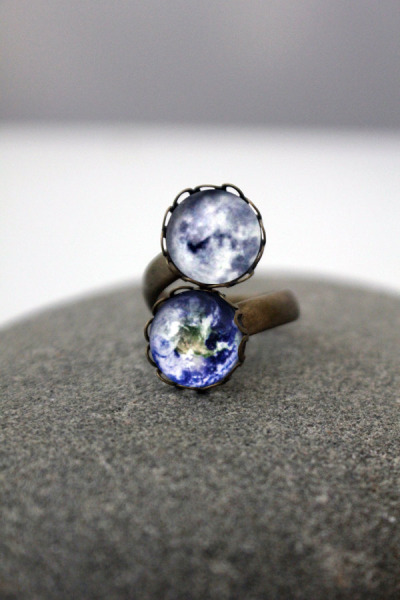
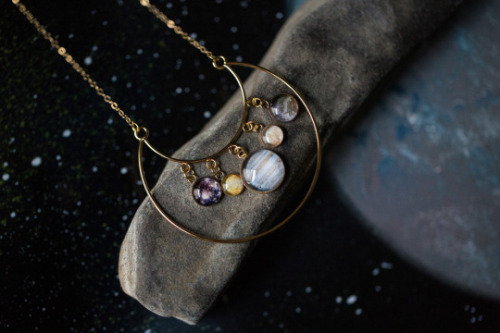
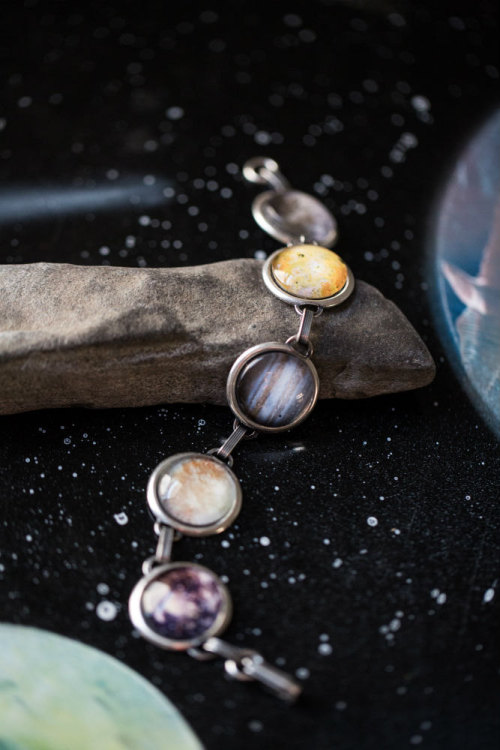
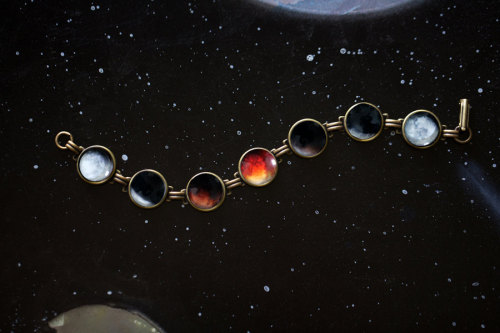
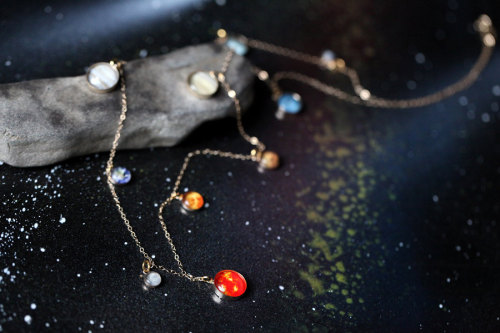
Stunning Jewellery Collection Pays Homage to the Solar System by Lauren Beacham
American artist Lauren Beacham left her job as a gallery director to dedicate her herself and artistry to her newfound passion as a jewelry designer. With a BFA in photography, Beacham transformed a creative outlet into a full-time job. As the studio continued to grow, her husband joined Yugen as a partner and business development director. A reflection of her otherworldly-inspired work, her independent boutique is named after the Japanese term, which is defined as an awareness of the universe that triggers emotional responses too deep and mysterious for words.
Impassioned by our galaxy, Beacham recreates our solar system in every piece of her jewelry. Composed or a variety of materials, including rhodium plated brass, glass, giclee, magnets and other tools, small images of the solar system are present in every charm. The inclusion of the phases of the moon, one of the biggest muse in art is carefully placed in charming bracelets. Its obscure and intriguing beauty is easily admired up close.
Overall Beacham caters to the nostalgic stargazer who is in love with mystery and beauty beyond grasp. She allows us to take fragments of stardust everywhere with us. The demand to be inspired and to dream is reflected in her work. Romantic in nature, every detail causes a sense of lost nostalgia and chimera. You can find her entire collection in her Etsy shop.
View similar posts here!









Watch: Indian teens explain why they love their skin — and send a crucial message to beauty companies
follow @the-movemnt
-
 justanherbivore liked this · 5 years ago
justanherbivore liked this · 5 years ago -
 enniu reblogged this · 5 years ago
enniu reblogged this · 5 years ago -
 dubiousspectrum reblogged this · 6 years ago
dubiousspectrum reblogged this · 6 years ago -
 marperetcolom-blog liked this · 6 years ago
marperetcolom-blog liked this · 6 years ago -
 artificialcherryflavour liked this · 6 years ago
artificialcherryflavour liked this · 6 years ago -
 wishasana-blog liked this · 6 years ago
wishasana-blog liked this · 6 years ago -
 alchemystik reblogged this · 7 years ago
alchemystik reblogged this · 7 years ago -
 midnightbluechild liked this · 7 years ago
midnightbluechild liked this · 7 years ago -
 6stronghands reblogged this · 7 years ago
6stronghands reblogged this · 7 years ago -
 6stronghands liked this · 7 years ago
6stronghands liked this · 7 years ago -
 ex-scent liked this · 7 years ago
ex-scent liked this · 7 years ago -
 hamilto-trash556-blog liked this · 7 years ago
hamilto-trash556-blog liked this · 7 years ago -
 funcoolmathgames reblogged this · 7 years ago
funcoolmathgames reblogged this · 7 years ago -
 eristaios reblogged this · 7 years ago
eristaios reblogged this · 7 years ago -
 xstellar-knightx liked this · 8 years ago
xstellar-knightx liked this · 8 years ago -
 dyormyne liked this · 8 years ago
dyormyne liked this · 8 years ago -
 nightswimmer01 liked this · 8 years ago
nightswimmer01 liked this · 8 years ago -
 artisanalbooty liked this · 8 years ago
artisanalbooty liked this · 8 years ago -
 chasing-steven liked this · 8 years ago
chasing-steven liked this · 8 years ago -
 pocketrunner reblogged this · 8 years ago
pocketrunner reblogged this · 8 years ago -
 diegoesguill liked this · 8 years ago
diegoesguill liked this · 8 years ago -
 scientificorient reblogged this · 8 years ago
scientificorient reblogged this · 8 years ago -
 scientificorient liked this · 8 years ago
scientificorient liked this · 8 years ago -
 tingersnfoes reblogged this · 8 years ago
tingersnfoes reblogged this · 8 years ago -
 miss-reniquity reblogged this · 8 years ago
miss-reniquity reblogged this · 8 years ago -
 carorous liked this · 8 years ago
carorous liked this · 8 years ago -
 hello-guadiana-art liked this · 8 years ago
hello-guadiana-art liked this · 8 years ago -
 silversteindanielle liked this · 8 years ago
silversteindanielle liked this · 8 years ago -
 radioactivepoisonrain liked this · 8 years ago
radioactivepoisonrain liked this · 8 years ago -
 run--out--of--usernames liked this · 8 years ago
run--out--of--usernames liked this · 8 years ago -
 mcm-curiosity liked this · 8 years ago
mcm-curiosity liked this · 8 years ago -
 bearalta liked this · 8 years ago
bearalta liked this · 8 years ago -
 oolalab liked this · 8 years ago
oolalab liked this · 8 years ago -
 blaque-honeyy reblogged this · 8 years ago
blaque-honeyy reblogged this · 8 years ago -
 lowdecembersun reblogged this · 8 years ago
lowdecembersun reblogged this · 8 years ago -
 er-zico reblogged this · 8 years ago
er-zico reblogged this · 8 years ago -
 interstellarwerewolf liked this · 8 years ago
interstellarwerewolf liked this · 8 years ago
Dear Readers,Welcome to my personal blog. I'm Sabyasachi Naik (Zico,24).An Agnostic,deeply NON religious(atheist), and Secular Progressive Civil Engineer . I'm brown and proud to be an Indian tribe. “I want to say a word to the Brahmins: In the name of God, religion, sastras you have duped us. We were the ruling people. Stop this life of cheating us from this year. Give room for rationalism and humanism.” ― Periyar E.V. Ramasamy
198 posts